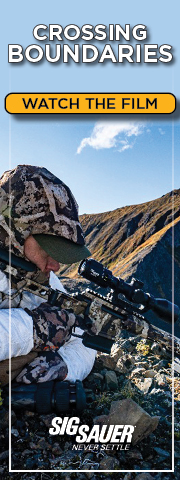There are a lot of videos, DVD, books and other aides for callers out today. These did not exist when I first got started hunting elk. It was trial and error for me, with mostly an emphasis on error. The other day I helped in the development of a calling tutorial on another forum, for elk hunters just starting out. Though the resulting product is quite useful, I believe there are other brief references that could be useful, to go about giving information, that can be referenced in camp or while taking a break during hunting. Attached is what I have personally come up with. It is called The Caller\'s Friend. What I would like is to get ideas from some of you on how to improve it. Let\'s keep it short. A line or two can be added, but the idea is for it to be brief, and useful for elk hunters with little experience calling elk.
THE CALLER\'S FRIEND
1. Location Bugle ? Use to find elk. If the bull answers, get as close as possible w/o being detected, Then cow call. If he calls back to the cow sound, bugle at him and stomp around.
2. Cow sounds ? Use few, at a time. If you get a bull responding, go to him (see tip #1, 6 & 7)
3. Chuckles tell an elk to come. Squawky small bull bugles make them curious.
4. Non-vocal elk sounds when close can aid in attracting elk. These include twig snapping, brush/tree raking, ground stomping, water splashing. A decoy often sells the calls you produce.
5. A series of 1-2 second high pitched, well spaced (lone small bull) can attract other bulls.
6. Options when close to a herd. a. Give one to three, very soft & somewhat whiny cow mews, spaced 2 to 4 minutes apart to draw a satellite bull. b A bugle sometimes with grunts plus stomping, & cow calls, may result in a bull coming. To have the bull between you and the herd is best.
7. Nervous grunt to stop elk for a shot. Time your single grunt/bark for an immediate shot.
- - - - - - - - - - - - - - - - - - - - - - - - - - - - - - - - - - - - - - - - - - - - - - - - - - - - - - - -
Listening: After hearing a bugle, get as close as possible (100 yards or less) before making elk sounds. Go undetected.
Cold Calling: When cold calling use short 2 second or less calls. They are natural & non-intimidating. Be patient. Elk don\'t always answer before coming, & they take their time. Wait at 30-45 minutes or more during these setups & watch, listen. Always be alert & ready. If calling after dark, leave immediately after receiving a bugle back. Return in the morning.
Setup: Always set up when calling. Get as close as possible. Set in front of cover, & in the shadows if possible. In a partner situation, shooter is set (up to 100+ yards out depending on the visibility) in a position to the front and right or left (downwind) from the elk, to get a shot. Caller/decoy should be the focal point for the elk to draw it past the shooter. For a solo hunter, call from a place where the elk is in shooting range, by the time it sees your location. Oftentimes it?s best to call & move to your setup spot that has shooting lanes (the bull will be going to the spot you called from).
Moving in: Stay undetected & move close to the elk. Set up shooter in front, if team hunting. Following tip #1, 2 or 4. If alone, quickly & unobserved move forward, or to the side & set up.
THE CALLER\'S FRIEND
1. Location Bugle ? Use to find elk. If the bull answers, get as close as possible w/o being detected, Then cow call. If he calls back to the cow sound, bugle at him and stomp around.
2. Cow sounds ? Use few, at a time. If you get a bull responding, go to him (see tip #1, 6 & 7)
3. Chuckles tell an elk to come. Squawky small bull bugles make them curious.
4. Non-vocal elk sounds when close can aid in attracting elk. These include twig snapping, brush/tree raking, ground stomping, water splashing. A decoy often sells the calls you produce.
5. A series of 1-2 second high pitched, well spaced (lone small bull) can attract other bulls.
6. Options when close to a herd. a. Give one to three, very soft & somewhat whiny cow mews, spaced 2 to 4 minutes apart to draw a satellite bull. b A bugle sometimes with grunts plus stomping, & cow calls, may result in a bull coming. To have the bull between you and the herd is best.
7. Nervous grunt to stop elk for a shot. Time your single grunt/bark for an immediate shot.
- - - - - - - - - - - - - - - - - - - - - - - - - - - - - - - - - - - - - - - - - - - - - - - - - - - - - - - -
Listening: After hearing a bugle, get as close as possible (100 yards or less) before making elk sounds. Go undetected.
Cold Calling: When cold calling use short 2 second or less calls. They are natural & non-intimidating. Be patient. Elk don\'t always answer before coming, & they take their time. Wait at 30-45 minutes or more during these setups & watch, listen. Always be alert & ready. If calling after dark, leave immediately after receiving a bugle back. Return in the morning.
Setup: Always set up when calling. Get as close as possible. Set in front of cover, & in the shadows if possible. In a partner situation, shooter is set (up to 100+ yards out depending on the visibility) in a position to the front and right or left (downwind) from the elk, to get a shot. Caller/decoy should be the focal point for the elk to draw it past the shooter. For a solo hunter, call from a place where the elk is in shooting range, by the time it sees your location. Oftentimes it?s best to call & move to your setup spot that has shooting lanes (the bull will be going to the spot you called from).
Moving in: Stay undetected & move close to the elk. Set up shooter in front, if team hunting. Following tip #1, 2 or 4. If alone, quickly & unobserved move forward, or to the side & set up.




